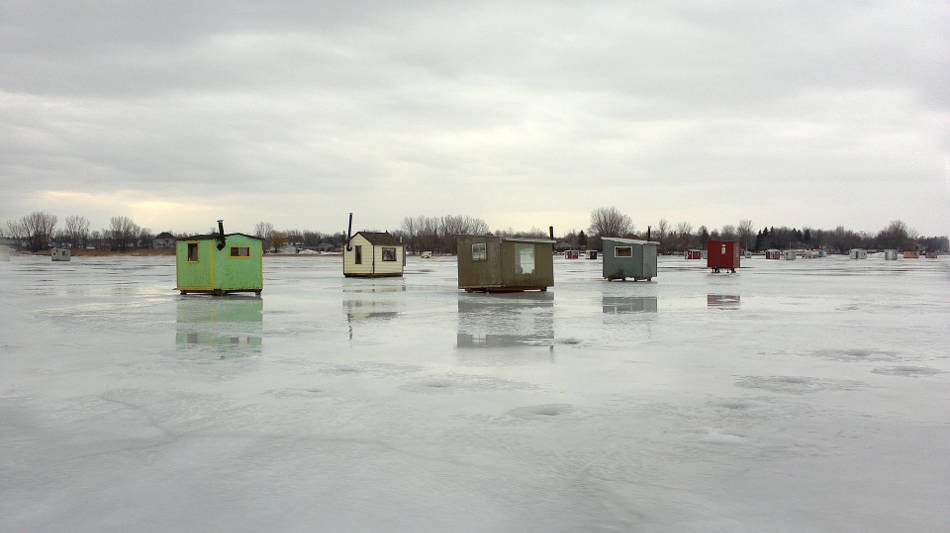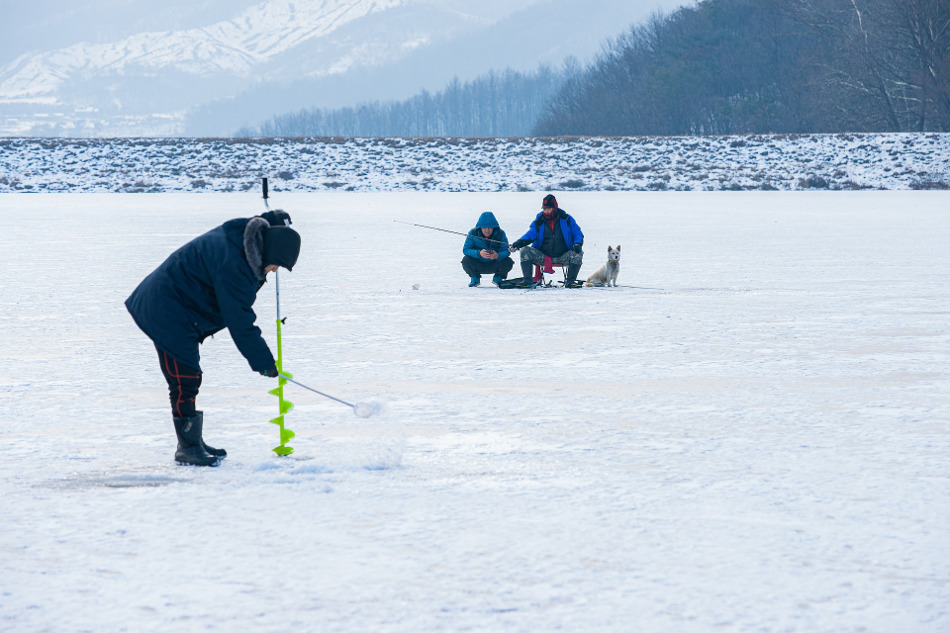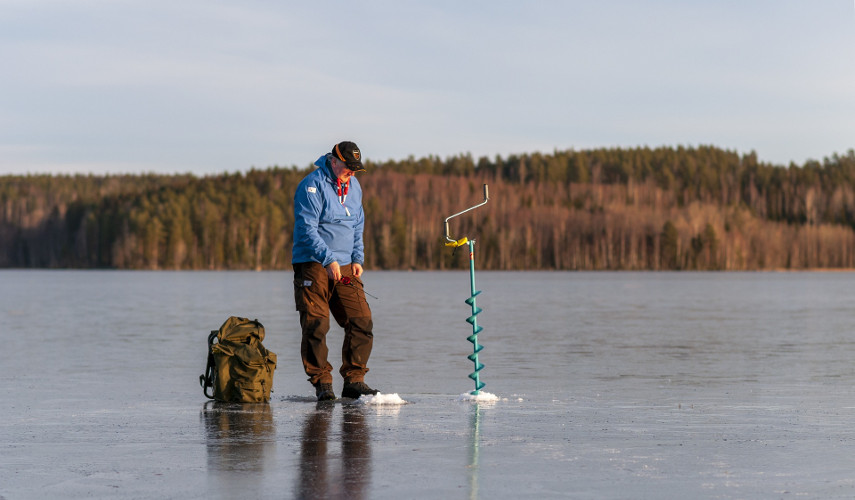There are three keys to staying warm while ice fishing: Keep feet, hands, and head well-protected; layer your clothing; and don’t allow sweat to build up against your skin.
You can accomplish all three by wearing a synthetic garment close to the skin as your first layer of clothing. Much of today’s insulated underwear, socks, gloves, and hats are lined with a material designed to wick sweat away from the body.
And yes, you will sweat, especially while trudging to your favorite ice hole or manually drilling holes through thick ice. Once you start fishing, the body cools rapidly. If moisture is trapped between the skin and clothing, you will feel chilled.
Also, layered clothing will help retain body heat, and if the day turns warmer, you can always remove an item or two.
Stay dry on the outside by wearing a rain suit or waterproof outer garment. Not only will it keep wind and wet snow out, but it will protect your knees from moisture while you’re kneeling over a hole.
Ice Fishing Items
Portable Shanty
Nothing has done more to make ice fishing enjoyable than lightweight sleds that pop up in minutes to become mini houses. They’re available in sizes that will accommodate one, two, or four people. Their sled bottoms have holes cut in the bottom (and trap doors) for easy access to the ice. The walls and ceiling are made of a durable synthetic material that is braced with aluminium poles. When transporting the shanty across ice and snow, the shanty collapses into a “flatbed trailer” for carrying gear across the ice. Some are designed to be pulled behind a snowmobile for long-distance journeys across large lakes.

Gas Lantern
Place a lantern inside a bucket or ice fishing sled and the heat it radiates will feel good on the face and fingers. One or two lanterns inside a portable ice shanty will make the interior toasty regardless of the temperature outside.
Carpet Remnant
Most shanties have plastic, wood, or carpeted floors to keep your feet from being in direct contact with ice. If you don’t use a shanty, carry a rubber-backed rug or carpet remnant to stand on, and your feet won’t become cold as quickly.
Ice Fishing Safety Tips

Carry a spud. This long-handled chisel-like metal bar is used to bang on the ice before you step on it. Simply thump the ice ahead; if the spud goes through, back up — slowly.
Drill test holes. The spud doesn’t give you a true image of the ice’s thickness, so check it periodically by drilling holes with an auger as you move across the lake.
Never fish alone. If you want to fish away from others, don’t be out of sight of other anglers. If you fall through the ice, you will probably need help in getting out.
Carry a rope. Instead of running to the aid of someone who has fallen through, toss him a rope and pull him out. If you don’t have a rope, crawl to the person so that you distribute your weight on the weak ice.
If you get wet, act quickly. Once you are out of the water, don’t stand up until you have crawled or rolled toward the area where you know you were walking safely before you fell through. Seek warmth and shelter immediately. Hypothermia can happen quickly. Also, retrieve your car keys from a pocket promptly. Once your pants freeze,access to keys could be a problem, and your vehicle may be the only nearby place with a source of heat.
Early and late ice can produce the winter’s best fishing, but it can also provide the most hazards because that’s when the thickness and quality of the ice is questionable.
Some experts claim that two or three inches of ice is safe for walking. But there are variables that can influence ice thickness and safety, so move slowly and carefully across frozen water.
For example, two inches of ice may be thick enough for you to walk on, but if you are heavier than the average person, wait until three inches of ice has formed. Also, be extra cautious if a group of anglers come into the area you’re fishing. It might be safe for you, but not five people. And if the lake has a river or large creeks feeding it, the current flowing under the ice adds to the danger.
Early-season ice can be inconsistent in its thickness because underwater springs on some lakes can cause invisible weak spots. This is especially true when snow covers early ice and insulates it form cold air temperatures.
On the other hand, two inches of new, clear ice can be safer than eight inches of old, spongy ice. As winter begins to fade and daily temperatures rise, or if you’re getting more rain than you are snow, ice can “sour.” Avoid ice that is milky, black, or honeycombed. Those are signs of weakened areas.

